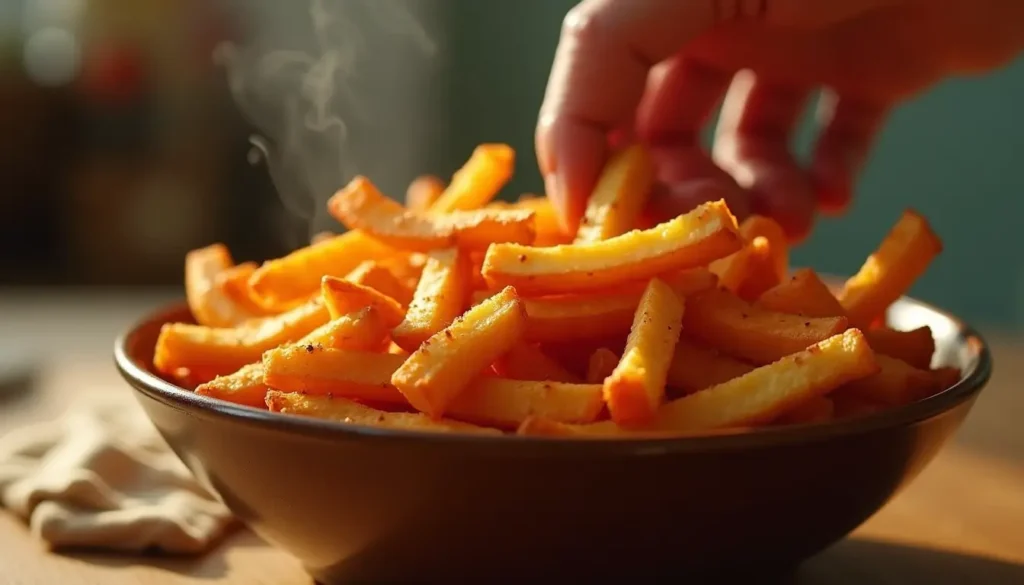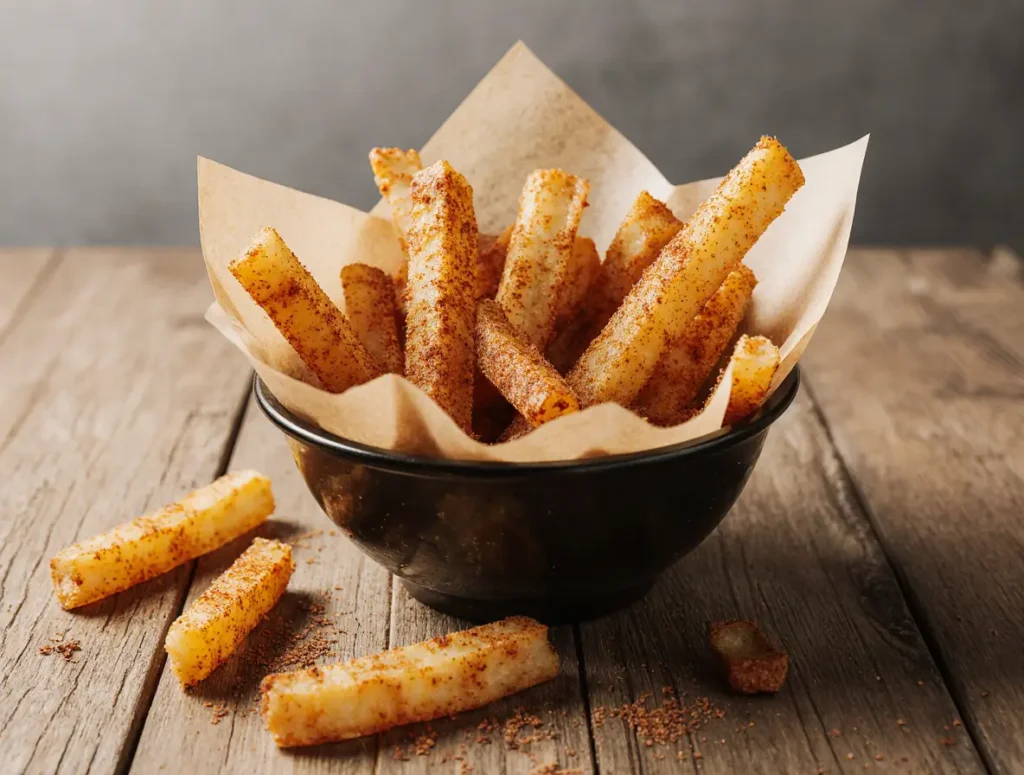Hot Fries Chips Mastery: How to Choose the Perfect One
Picture this: you’re standing in the snack aisle, overwhelmed by rows of fiery red bags promising the perfect crunch and heat. Your mouth waters as you remember that first bite of perfectly seasoned hot fries chips – the satisfying crunch, the burst of spicy flavor, the way they disappeared from the bag faster than you could say “Chester’s Hot Fries.” Whether you’re team Andy Capps Hot Fries or swear by Chester hot fries varieties, choosing the right spicy snack can make the difference between a mediocre munch and a flavor explosion that leaves you reaching for more. From understanding heat levels to mastering preparation techniques, this comprehensive guide will transform you from a casual snacker into a hot fries connoisseur.
The Ultimate Guide to Hot Fries: Understanding Your Options
What Makes Hot Fries Chips Special?
Hot fries chips occupy a unique space in the snack food universe, combining the satisfying crunch of traditional potato chips with the bold flavors typically reserved for corn-based snacks. Unlike regular chips, these fiery treats undergo specialized seasoning processes that create layers of flavor complexity you won’t find in standard offerings.
The magic lies in their distinctive texture profile. When you bite into quality hot fries, you experience a crispy exterior that gives way to a tender interior, creating a satisfying contrast that keeps you coming back for more. This texture results from carefully controlled manufacturing processes that balance moisture content with seasoning adhesion.
What truly sets hot fries chips apart is their flavor complexity. Master snack manufacturers blend multiple spice components, creating harmonious heat that builds gradually rather than overwhelming your palate immediately. The best varieties achieve perfect balance between capsaicin heat, savory depth, and subtle sweetness that rounds out the flavor profile.
| Brand | Calories per Serving | Sodium (mg) | Fat (g) | Carbs (g) |
|---|---|---|---|---|
| Chester’s Hot Fries | 160 | 300 | 10 | 15 |
| Andy Capps Hot Fries | 150 | 280 | 9 | 16 |
| Generic Hot Fries | 140 | 320 | 8 | 17 |
Popular Hot Fries Brands Breakdown
Chester’s Hot Fries stands as the undisputed champion in many snackers’ hearts. This brand pioneered the hot fries category with its distinctive corn-based formula that delivers intense heat without compromising on flavor depth. The signature red seasoning creates an unmistakable appearance that signals serious spice ahead.
Andy Capps Hot Fries takes a different approach, focusing on balanced heat that appeals to broader audiences. Their potato-based foundation provides a different textural experience, often described as more substantial and satisfying for those seeking heartier snacking experiences.
Chester hot fries variations have expanded the brand’s reach, offering different heat levels and flavor profiles to accommodate diverse preferences. Regional variations often incorporate local spice preferences, creating unique experiences depending on where you purchase them.
Regional and specialty brands deserve recognition too. Many local manufacturers create exceptional hot fries that rival national brands, often incorporating unique spice blends that reflect local culinary traditions.
Heat Level Mastery: Finding Your Perfect Spice Threshold

Understanding Spice Scales in Hot Fries
Navigating the heat spectrum of hot fries chips requires understanding how manufacturers approach spice levels. While most brands don’t publish official Scoville ratings, you can categorize them into distinct heat ranges based on your tolerance and experience.
Beginner-friendly options typically register between 500-1,500 Scoville units, providing noticeable warmth without overwhelming newcomers to spicy snacks. These varieties allow you to enjoy the flavor complexity while building tolerance gradually.
Intermediate hot fries push boundaries with 1,500-3,000 Scoville units, delivering satisfying heat that experienced snackers crave. These options provide the perfect balance for those who want serious spice without crossing into extreme territory.
Advanced heat seekers gravitate toward varieties exceeding 3,000 Scoville units, where the burn becomes a central part of the experience. These hot fries chips demand respect and preparation, often requiring strategic consumption techniques.
| Heat Level | Scoville Range | Recommended For | Popular Brands |
|---|---|---|---|
| Mild | 500-1,500 | Beginners | Andy Capps Original |
| Medium | 1,500-3,000 | Intermediate | Chester’s Classic |
| Hot | 3,000-5,000 | Advanced | Chester’s Flamin’ Hot |
| Extreme | 5,000+ | Heat Seekers | Specialty Brands |
Factors Affecting Heat Perception
Your individual tolerance plays the primary role in determining which hot fries work best for your preferences. Factors like genetics, previous exposure to spicy foods, and even your current mood can influence how you perceive heat levels.
Flavor masking effects occur when other taste components diminish or enhance spice perception. Sweet elements can temper heat, while salt can intensify it. Understanding these interactions helps you choose hot fries chips that deliver your desired experience.
Texture significantly impacts spice delivery. Rougher surfaces hold more seasoning, intensifying heat, while smoother textures might provide more balanced distribution. This knowledge helps you select varieties that match your heat preferences.
Building heat tolerance safely involves gradual progression and strategic consumption. Start with milder varieties and increase intensity slowly, allowing your palate to adapt without overwhelming your system.
Texture and Crunch: The Foundation of Perfect Hot Fries

Analyzing Texture Profiles
The foundation of exceptional hot fries chips lies in achieving optimal texture that enhances both flavor delivery and eating satisfaction. Different manufacturing approaches create distinct textural experiences that appeal to various preferences.
Fry-cut varieties mimic traditional French fry shapes, providing substantial surface area for seasoning adhesion. These hot fries offer satisfying bite-through resistance that creates audible crunch, enhancing the overall sensory experience.
Stick-shaped alternatives provide different advantages, including easier handling and more consistent seasoning distribution. Their uniform shape ensures predictable heat delivery with each bite, making them ideal for those who prefer consistent experiences.
Coating thickness directly affects both texture and flavor intensity. Thicker coatings provide more robust seasoning delivery but may sacrifice some crunch. Thinner applications maintain textural integrity while offering subtler flavor development.
| Texture Type | Crunch Level | Seasoning Capacity | Best For |
|---|---|---|---|
| Fry-Cut | High | Maximum | Texture lovers |
| Stick-Shaped | Medium | Balanced | Consistent experience |
| Chip-Style | Very High | Variable | Traditional snackers |
Preparation Methods for Enhanced Experience
Optimal consumption temperature significantly impacts your hot fries experience. Room temperature varieties provide the most accurate flavor representation, while slightly chilled options can temper heat perception for sensitive palates.
Strategic consumption techniques maximize enjoyment while managing heat intensity. Alternating bites with cooling beverages, taking breaks between servings, and pairing with complementary foods all enhance the overall experience.
Creative serving suggestions transform hot fries chips from simple snacks into memorable experiences. Crushing them as toppings, incorporating them into recipes, or using them as flavor enhancers opens new possibilities.
When you want to air fry hot pocket alternatives, similar temperature and timing principles apply. Lower temperatures and shorter cooking times preserve texture while enhancing flavors, creating satisfying results.
Flavor Profiles: Beyond the Heat
Understanding Seasoning Blends
The artistry of hot fries chips lies in complex seasoning blends that create multi-dimensional flavor experiences. Master manufacturers combine various spice components to achieve signature profiles that distinguish their products from competitors.
Primary spice components typically include chili powder, paprika, garlic powder, onion powder, and various pepper extracts. The proportions and specific varieties of these ingredients create each brand’s unique character.
Balancing heat with other flavors prevents overwhelming experiences while maintaining excitement. Successful hot fries incorporate savory, sweet, and umami elements that complement rather than compete with spiciness.
Regional flavor preferences influence product development, with manufacturers adjusting formulations for different markets. Understanding these variations helps you select hot fries that align with your taste preferences.
| Flavor Component | Primary Function | Common Sources | Intensity Level |
|---|---|---|---|
| Capsaicin | Heat delivery | Chili peppers | Variable |
| Paprika | Color and mild heat | Bell peppers | Low-Medium |
| Garlic | Savory depth | Garlic powder | Medium |
| Onion | Sweet-savory balance | Onion powder | Low-Medium |
Pairing Hot Fries with Complementary Foods
Strategic pairing transforms hot fries from standalone snacks into components of satisfying culinary experiences. Understanding which combinations enhance rather than diminish flavors elevates your snacking game.
Dairy products provide classic heat relief while adding creamy richness that complements spicy flavors. Milk, cheese, and yogurt-based dips create cooling contrasts that allow you to appreciate heat levels without overwhelming your palate.
Acidic elements like citrus juices or vinegar-based condiments brighten flavors while providing palate cleansing effects. These combinations work particularly well with Chester’s Hot Fries and similar corn-based varieties.
Sweet accompaniments offer surprising harmony with spicy hot fries chips. Fruit juices, honey-based dips, or even chocolate create complex flavor interactions that sophisticated snackers appreciate.
Quality Indicators: Choosing Fresh and Flavorful Options
Visual and Physical Quality Checks
Identifying high-quality hot fries requires systematic evaluation of visual and physical characteristics that indicate freshness and proper manufacturing. Developing these assessment skills ensures consistently satisfying purchases.
Package integrity serves as your first quality indicator. Undamaged packaging with proper sealing protects contents from moisture and contamination that compromise both texture and flavor. Avoid packages with tears, dents, or compromised seals.
Color consistency throughout the package indicates proper seasoning application and quality control. Uniform coloration suggests even spice distribution, while significant variations might indicate manufacturing issues or aging.
Physical examination reveals texture quality before consumption. Fresh hot fries chips should feel firm without excessive brittleness. Soft or chewy textures often indicate moisture exposure or staleness.
| Quality Factor | Good Indicators | Warning Signs | Action Required |
|---|---|---|---|
| Package Integrity | Sealed, undamaged | Tears, dents | Choose different package |
| Color | Uniform, vibrant | Faded, uneven | Check expiration date |
| Texture | Firm, crispy | Soft, chewy | Avoid purchase |
| Aroma | Fresh, spicy | Stale, off-odors | Select alternative |
Storage and Freshness Optimization
Proper storage techniques preserve the quality characteristics that make hot fries enjoyable while extending their usable lifespan. Understanding these principles prevents waste while maintaining optimal eating experiences.
Temperature control prevents degradation of both texture and flavor components. Store hot fries chips in cool, dry environments away from direct sunlight and heat sources that accelerate staleness.
Moisture management proves critical for maintaining crispness. Airtight containers prevent atmospheric moisture from compromising texture, while desiccant packets can provide additional protection in humid environments.
Rotation practices ensure you consume hot fries at peak quality. First-in, first-out principles prevent older packages from deteriorating while newer ones maintain freshness.
Advanced Hot Fries Techniques and Hacks

DIY Hot Fries Enhancement
Customizing hot fries chips allows you to create personalized flavor experiences that perfectly match your preferences. These techniques transform standard varieties into unique creations that satisfy specific cravings.
Seasoning enhancement techniques involve adding complementary spices that build upon existing flavors without overwhelming them. Careful application ensures even distribution while maintaining the original character.
Heat modification methods allow you to adjust spice levels to match your tolerance. Adding milder seasonings can temper excessive heat, while incorporating hotter elements increases intensity for those seeking more challenge.
Texture modification techniques can refresh slightly stale hot fries or create new textural experiences. Brief heating or strategic preparation methods restore crispness while enhancing flavor development.
| Enhancement Type | Technique | Recommended Additions | Application Method |
|---|---|---|---|
| Heat Boost | Spice Addition | Cayenne, chili powder | Light dusting |
| Flavor Depth | Umami Enhancement | Parmesan, MSG | Gentle coating |
| Texture Refresh | Heat Treatment | None required | Brief warming |
| Cooling Effect | Dairy Integration | Powder cheese | Even distribution |
Creative Culinary Applications
Hot fries chips serve as versatile ingredients that add texture and flavor to various dishes. These applications demonstrate the potential beyond traditional snacking while maximizing your investment in quality products.
Crushing hot fries creates flavorful coatings for proteins or vegetables, adding both spice and crunch to otherwise ordinary preparations. This technique works particularly well with chicken, fish, or roasted vegetables.
Incorporating them into recipes as seasoning agents provides complex flavor development without requiring multiple spice additions. Ground hot fries can enhance soups, stews, or casseroles with minimal effort.
When you air fry hot pocket alternatives or similar convenience foods, crushed hot fries chips can provide exterior coating that adds both texture and flavor enhancement to otherwise plain preparations.
Health Considerations and Mindful Consumption
Nutritional Awareness
Understanding the nutritional impact of hot fries chips enables informed consumption decisions that balance enjoyment with health consciousness. Awareness promotes responsible snacking without eliminating pleasure.
Calorie density varies significantly between brands and varieties, with typical servings ranging from 140-160 calories per ounce. Portion control strategies help manage caloric intake while maintaining satisfaction.
Sodium content deserves particular attention, as hot fries often contain 280-320 milligrams per serving. Balancing sodium intake throughout the day prevents excessive consumption while allowing for enjoyable snacking.
Alternative options provide paths to healthier snacking without completely abandoning hot fries preferences. Baked varieties, reduced-sodium formulations, or homemade alternatives offer compromise solutions.
Dietary Restrictions and Accommodations
Modern hot fries chips accommodate various dietary needs, with manufacturers increasingly offering alternatives for restricted diets. Understanding these options ensures everyone can enjoy spicy snacking experiences.
Gluten-free varieties serve those with celiac disease or gluten sensitivity, with many corn-based hot fries naturally meeting these requirements. Always verify labeling to ensure compliance with specific dietary needs.
Allergen considerations extend beyond gluten to include common triggers like dairy, soy, or specific spice allergies. Careful label reading prevents adverse reactions while identifying safe options.
Vegan and vegetarian compatibility varies between brands, with some incorporating dairy-based seasonings or processing aids. Plant-based alternatives provide inclusive options for restricted diets.
Where to Find and Buy the Best Hot Fries

Retail Location Strategies
Strategic shopping approaches maximize your chances of finding fresh, high-quality hot fries chips while potentially saving money through informed purchasing decisions. Understanding retail patterns improves your success rate.
Grocery stores typically offer the widest selection and most competitive pricing, with frequent promotions and bulk purchasing options. Their controlled environments and faster turnover generally ensure fresher products.
Convenience stores provide accessibility and immediate gratification but may have limited selection and higher prices. They’re ideal for impulse purchases or when specific varieties aren’t available elsewhere.
Online purchasing opens access to specialty varieties and bulk options unavailable locally. However, shipping costs and potential handling issues require consideration when making purchasing decisions.
Seasonal and Limited Edition Varieties
Staying informed about special releases enhances your hot fries experiences while providing opportunities to discover new favorites. These varieties often showcase innovative flavor combinations or seasonal themes.
Holiday-themed varieties frequently appear during major celebrations, offering unique flavor profiles that reflect seasonal ingredients or cultural traditions. These limited runs create excitement and collection opportunities.
Regional exclusive flavors provide insights into local taste preferences while offering unique experiences unavailable elsewhere. Traveling snackers often seek these varieties as memorable souvenirs.
Frequently Asked Questions About Hot Fries Chips
Q: What’s the difference between Chester’s Hot Fries and Andy Capps Hot Fries? A: Chester’s Hot Fries typically offer a bolder, more intense heat with a corn-based texture, while Andy Capps Hot Fries provide a milder spice level with a potato-based crunch. Both brands excel in different aspects of the hot fries experience.
Q: How do I choose the right heat level for hot fries? A: Start with milder varieties and gradually work up to spicier options. Consider your tolerance for capsaicin and whether you prefer immediate heat or a slow burn sensation when selecting hot fries chips.
Q: Can I air fry hot pocket alternatives using similar techniques to hot fries chips? A: Yes, many air frying techniques that work for reheating or crisping hot fries can be adapted for hot pocket-style snacks, typically using lower temperatures and shorter cooking times to air fry hot pocket alternatives effectively.
Q: Are Chester hot fries the same as Chester’s Hot Fries? A: Chester hot fries and Chester’s Hot Fries refer to the same brand, with slight variations in packaging and regional naming conventions.
Q: What’s the best way to store opened hot fries chips? A: Store in an airtight container at room temperature, away from direct sunlight and moisture. Properly stored hot fries maintain optimal crunch for 3-5 days after opening.
Q: How can I make my hot fries chips spicier? A: Add cayenne pepper, hot sauce powder, or chili flakes to increase heat levels. Shake the bag gently to distribute additional seasonings evenly throughout your hot fries chips.
Conclusion
Mastering the art of choosing perfect hot fries chips comes down to understanding your personal preferences for heat, texture, and flavor complexity. Whether you’re devoted to Chester’s Hot Fries, curious about Andy Capps Hot Fries, or exploring Chester hot fries varieties, the key lies in experimenting with different brands, heat levels, and preparation methods.
Remember that the perfect hot fries experience extends beyond just the snack itself – consider storage methods, pairing options, and even creative applications like using similar techniques when you air fry hot pocket alternatives. Armed with this comprehensive knowledge, you’re ready to navigate the spicy snack landscape with confidence and discover your ultimate hot fries chips preference.
Take action today: Visit your local grocery store and try three different hot fries brands using the quality indicators outlined in this guide. Document your taste preferences and build your personal ranking system. Your perfect spicy snacking experience awaits – start your hot fries chips mastery journey now!
Tried This Recipe? Tell Us How It Went!
There are no reviews yet. Be the first one to write one.

